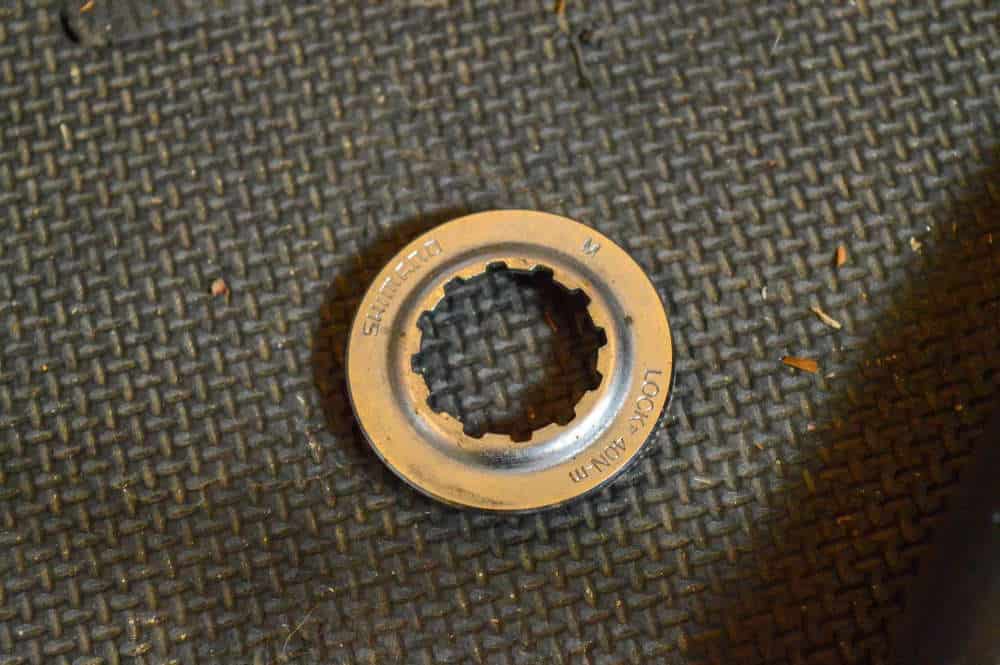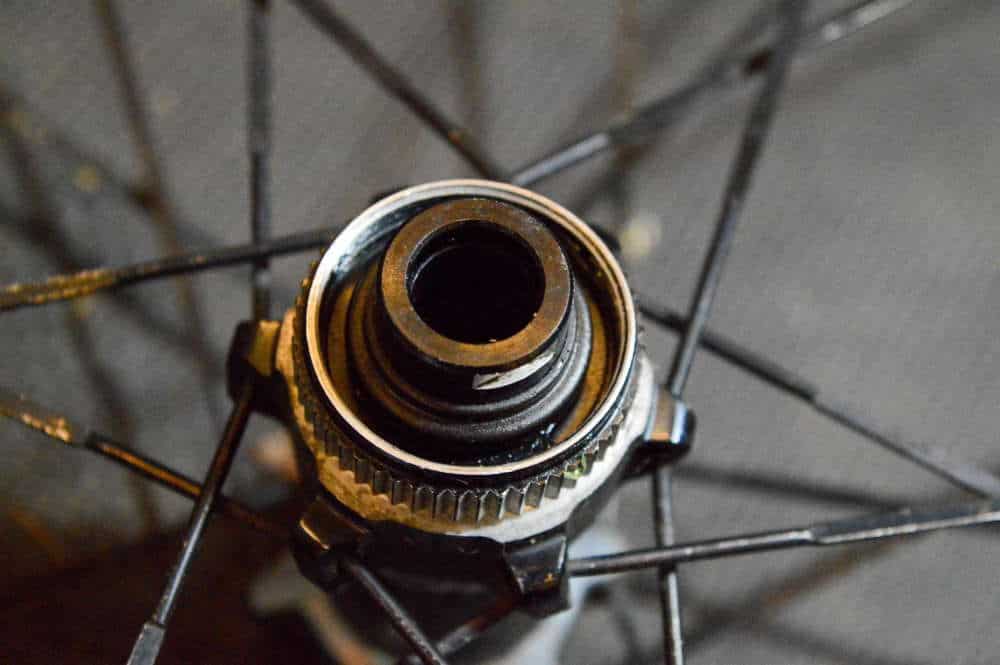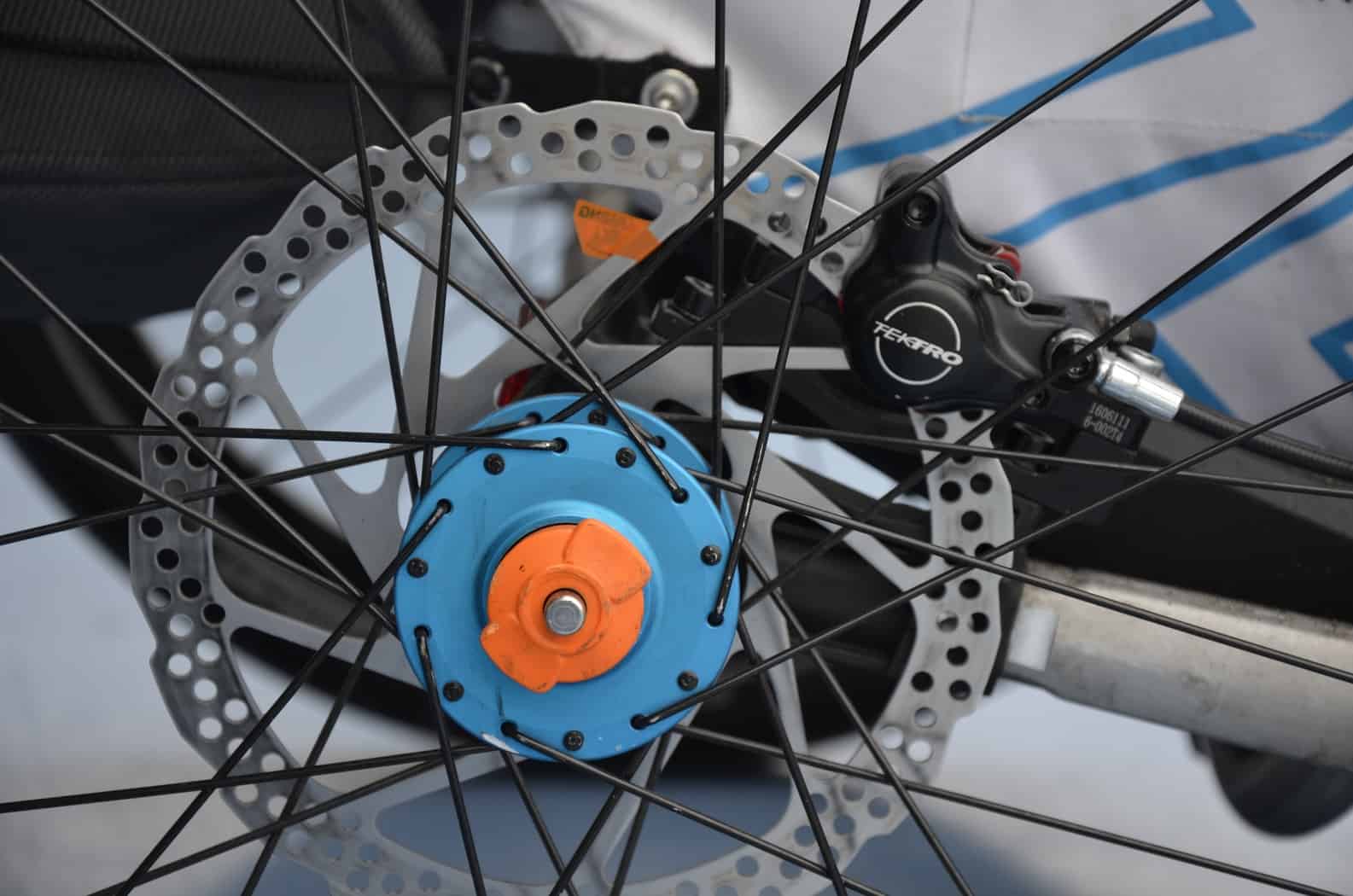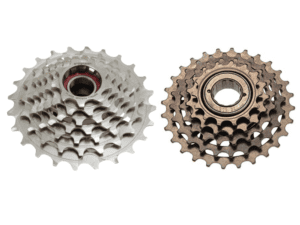New bike owners often ask, when buying bikes, should they go with Centerlock or 6 bolt? Well, both center lock and 6 bolt rotors offer great stopping power but there are some differences.
The main difference between center lock and 6-bolt rotors is that 6-bolt rotors connect to the wheel with 6 bolts in a star pattern and Center lock rotors use a two-part mechanism to connect to the wheel.
Centerlock vs 6 bolt: Which is the Better Disc Brake
What You Need to Know About The Centerlock System
Shimano’s centerlock rotor is completely different from the typical 6-bolt system. Instead of having to attach the rotor with 6 single bolts you just have one large bolt in the center.
They are much easier to work on as the removal of the disc is so much faster than your typical 6-bolt system. It also means that you have much less chance of cross-threading bolts as you just have one single bolt to worry about.
As far as performance there’s very little difference from 6 bolt but some people say they are a few grams heavier in weight but it’s extremely minimal.

Available For Both MTBs And Road Bikes
There are several different types of brake systems and road bikes are shifting from rim brakes to disc brakes quite fast, and the rim brakes battalion has no option but to move with the trend. MTBs embraced the benefits of disc brakes many years ago.
Center lock disc rotors and pads have been getting technological boosts here and there. The Ice-Tech rotors, for instance, reduce the rotor’s temperature by 50 degrees. The pads also aid in reducing heat further. With that system, you will enjoy consistent braking power downhill, whether using a road bike or MTB.
Some discs lose power when you brake for a long downhill. A hot rotor and pads reduce their braking effectiveness. Center lock systems are known to perform well even under pressure. You can count on their sustained braking power and ride faster and with lots of confidence.

Pros
- You can have a center hub replacement
- Rotors can be easily removed for easier transportation of the wheels
- Some centerlock rotors are lighter than 6 bolt rotors.
- Rotors are harder to bend because of their inner ring.
- Easy to center the center lock rotors.
- The hub is lightweight
Cons of the Center lock
- Rotors are more expensive than 6 bolt rotors
- You must purchase a unique key or wrench for installing and uninstalling the rotors
- Compatibility issues arise
What You Need to Know About The 6 Bolt System
The 6 bolt rotors have been around since the 90s when having such for your mountain bike was considered a luxury. These days every MTB has disc brakes, and over 90 percent of them have the 6-bolt rotor system. It’s a patented option so many hubs come with this feature, so they are cheaper. The 6 bolt rotors are mostly used in budget bikes.
The rotors are tightly held to the hub by tightening six hex or Allen Torx head bolts using a torque wrench. It would be best if you tightened all the bolts tightly and evenly. The Torque wrench used to tighten the screws is available in most toolkits.
They are more time-consuming but they are much cheaper when it comes to cost and you have many more options for replacement parts compared to the center lock system.

Related: How to Install Disc Brakes On Your MTB
The 6-bolt System is Suitable For Bikes Running On SRAM Components
Shimano patented the center lock system. All hubs that take centerlock rotors are either Shimano or supplied by the brand and use Shimano rotors only. That leaves other brands with the 6-bolt option. If you are running an SRAM brake set, the 6 bolt will come in handy for you.
6-Bolt System Pros
- Rotors are readily available
- Inexpensive
- Comes with unlimited rotor options
- Unlimited bolt hub options
- Multiple brake options
- Compatible across different hubs and brake systems
6-Bolt System Cons
- Time-consuming
- The rotor bolts can cross thread sometimes.
- Easier to warp
Wrapping Up
We can both agree that the Centerlock rotors are better than the 6-bolt option. However, your budget and stock availability will determine what you have to use sometimes. Either is fine, it doesn’t make enough noticeable difference unless you are a pro or consistently taking your bike apart.





